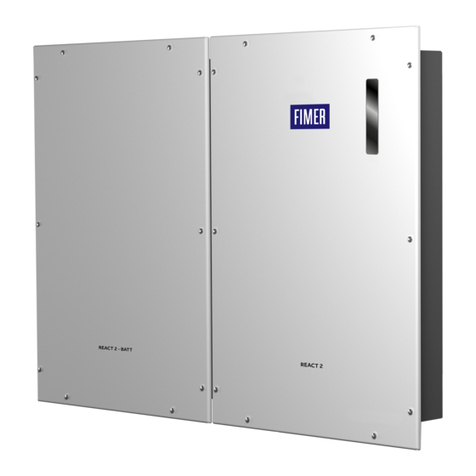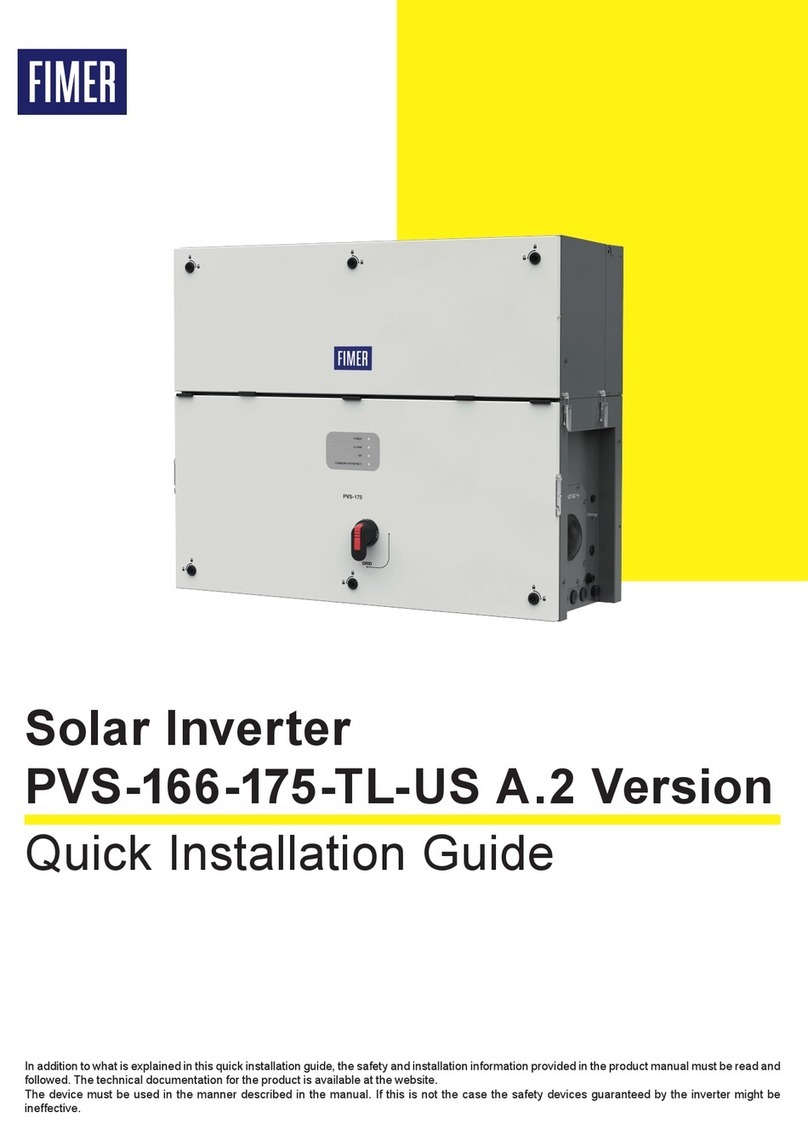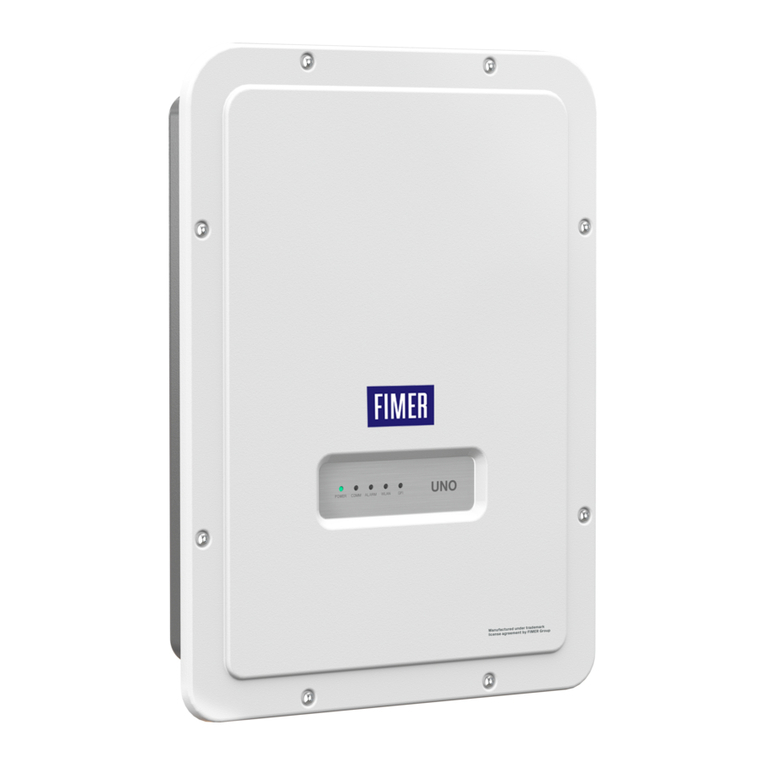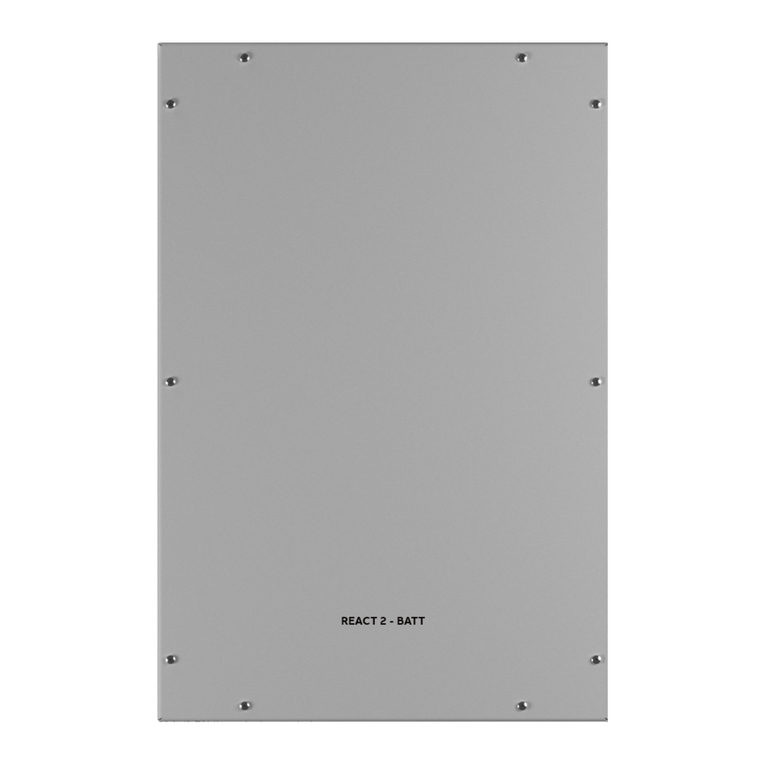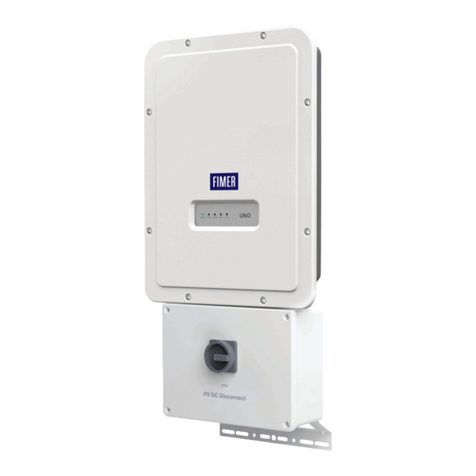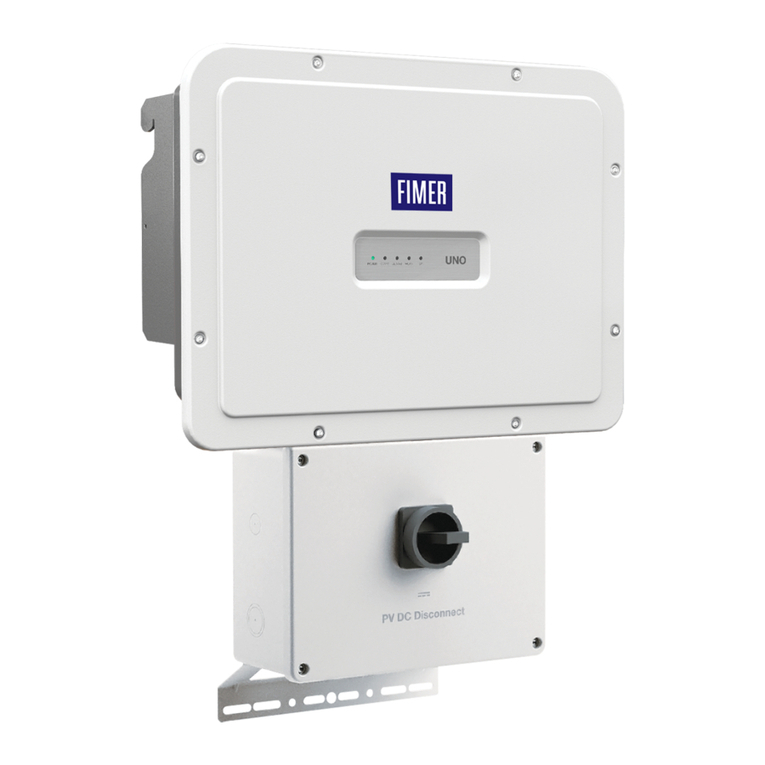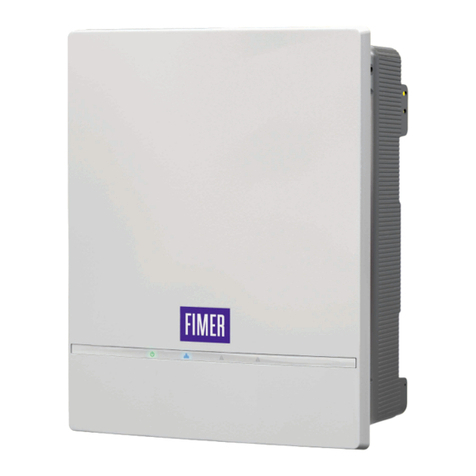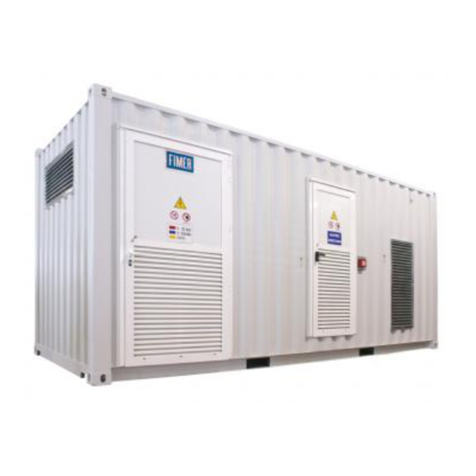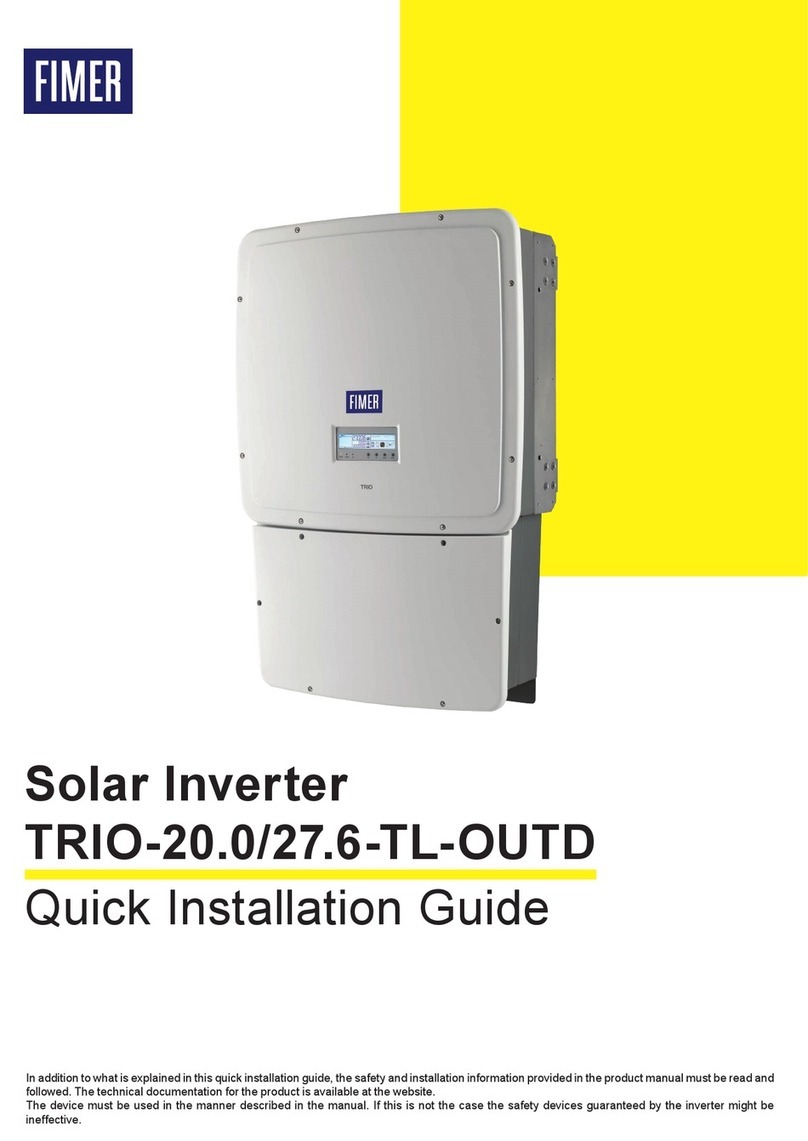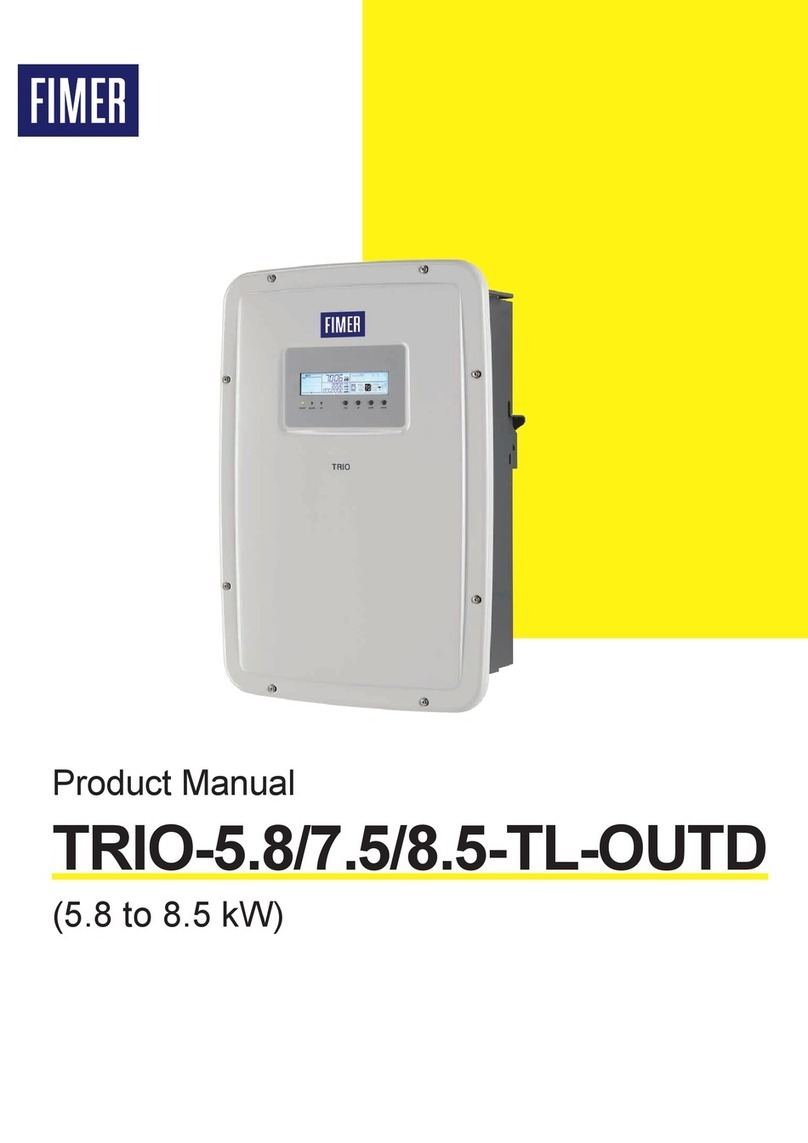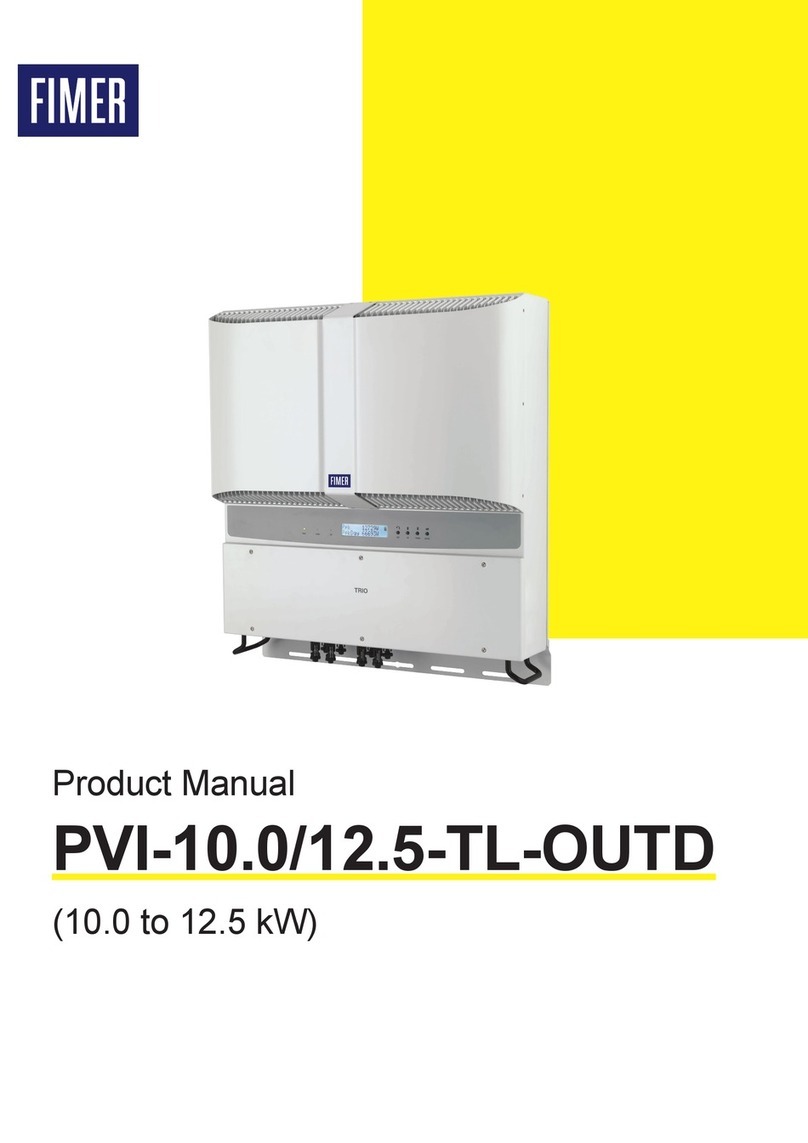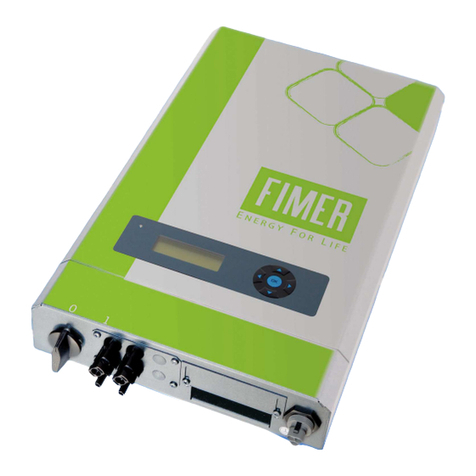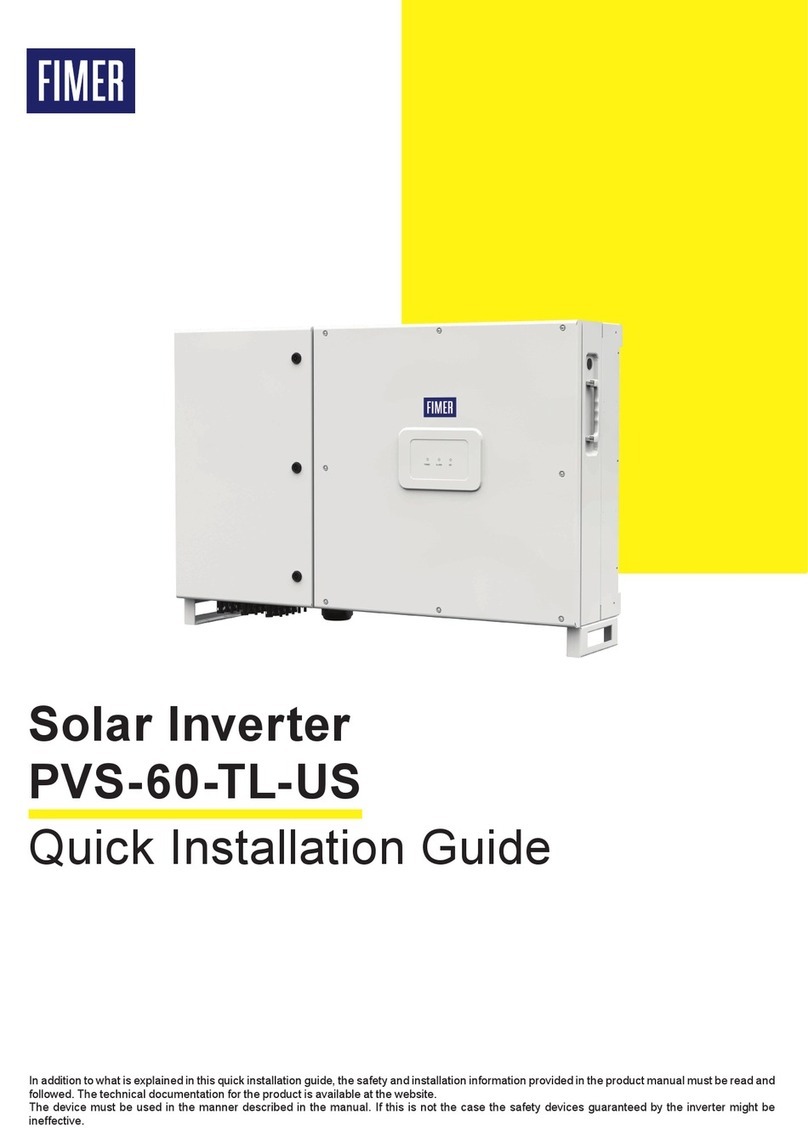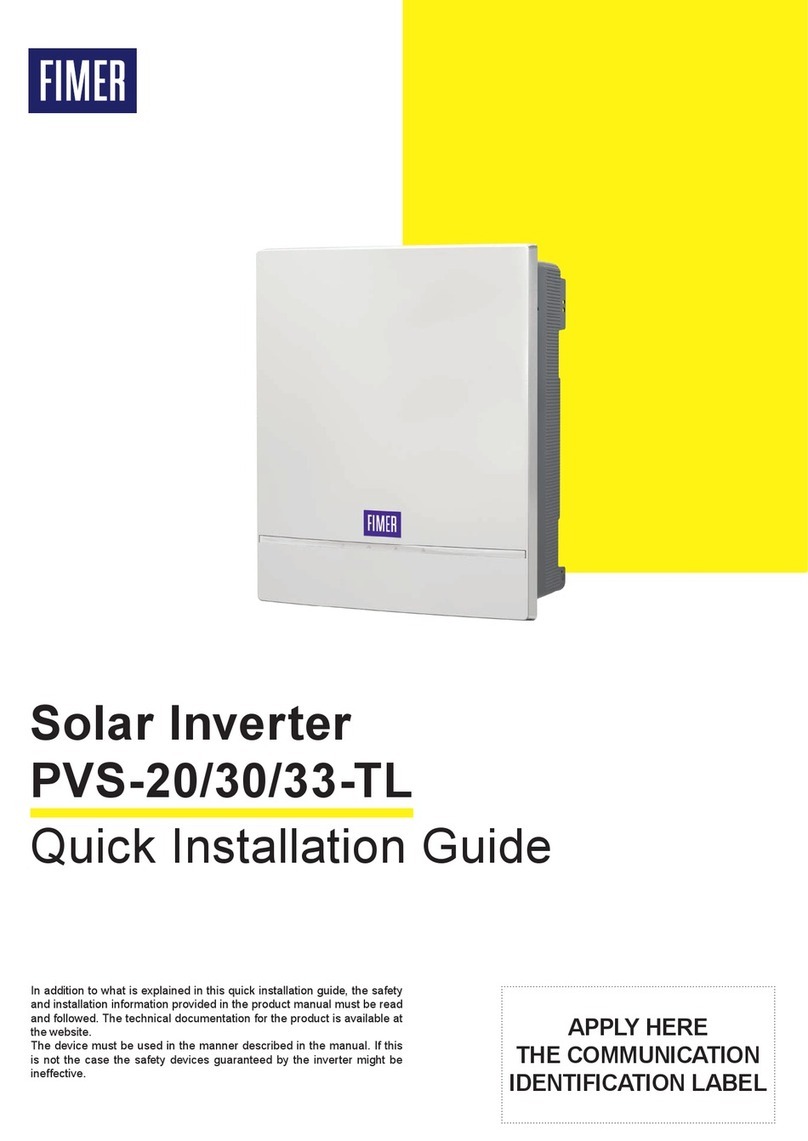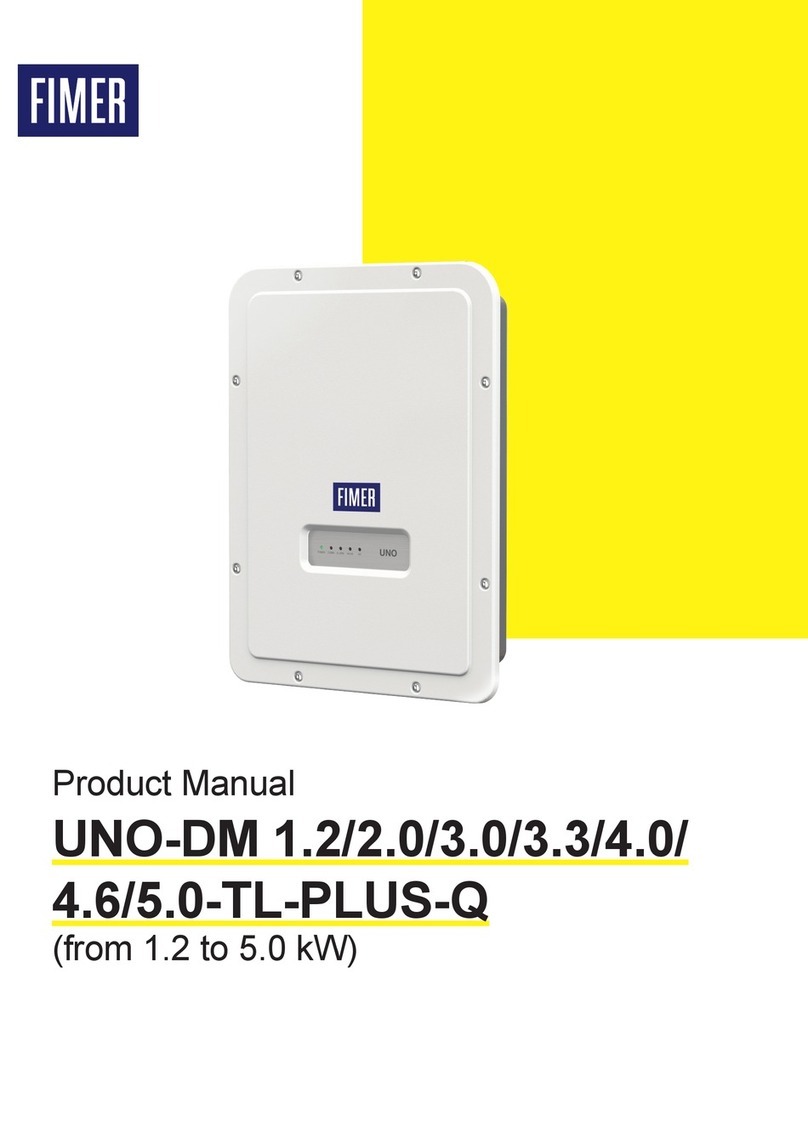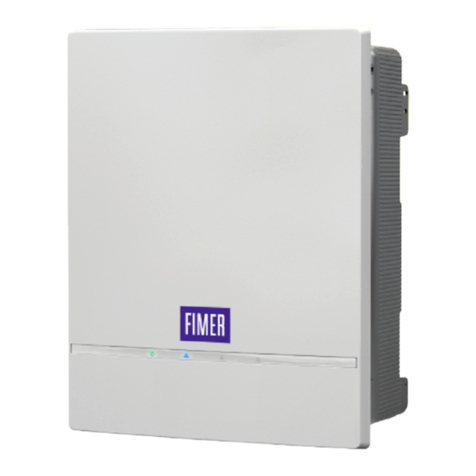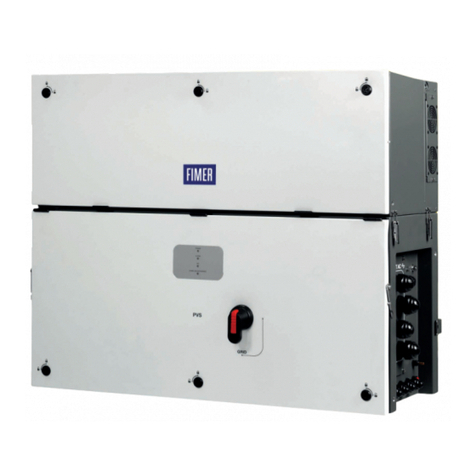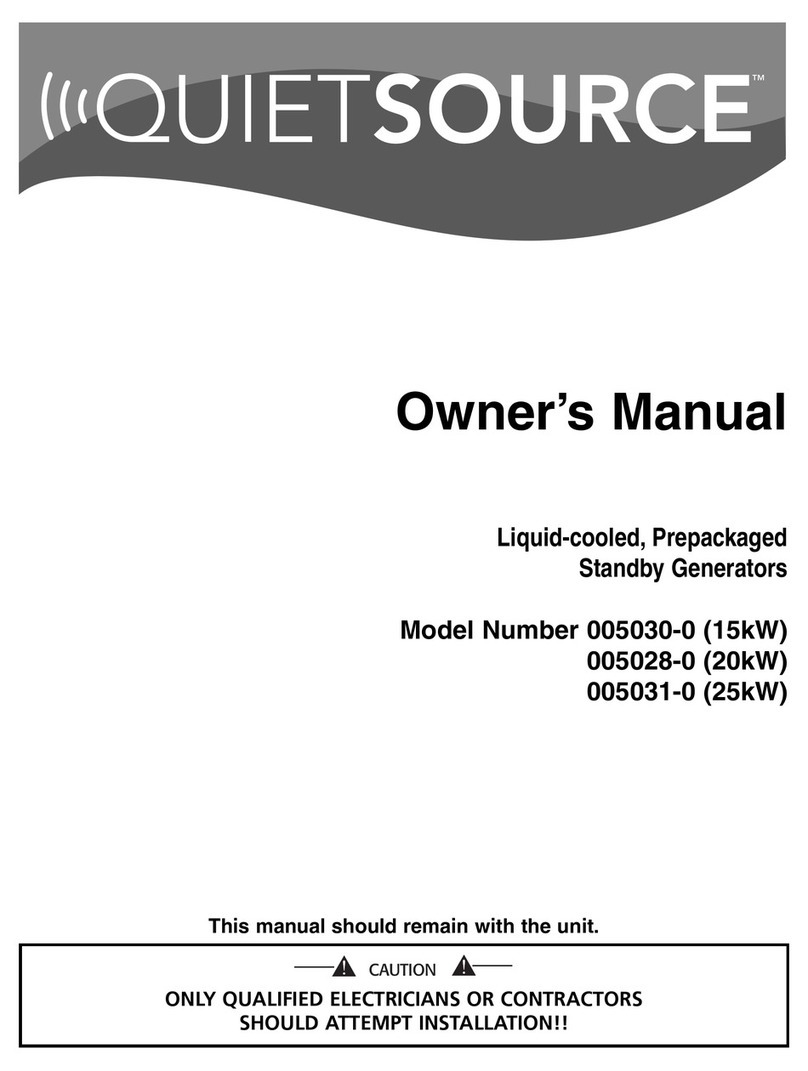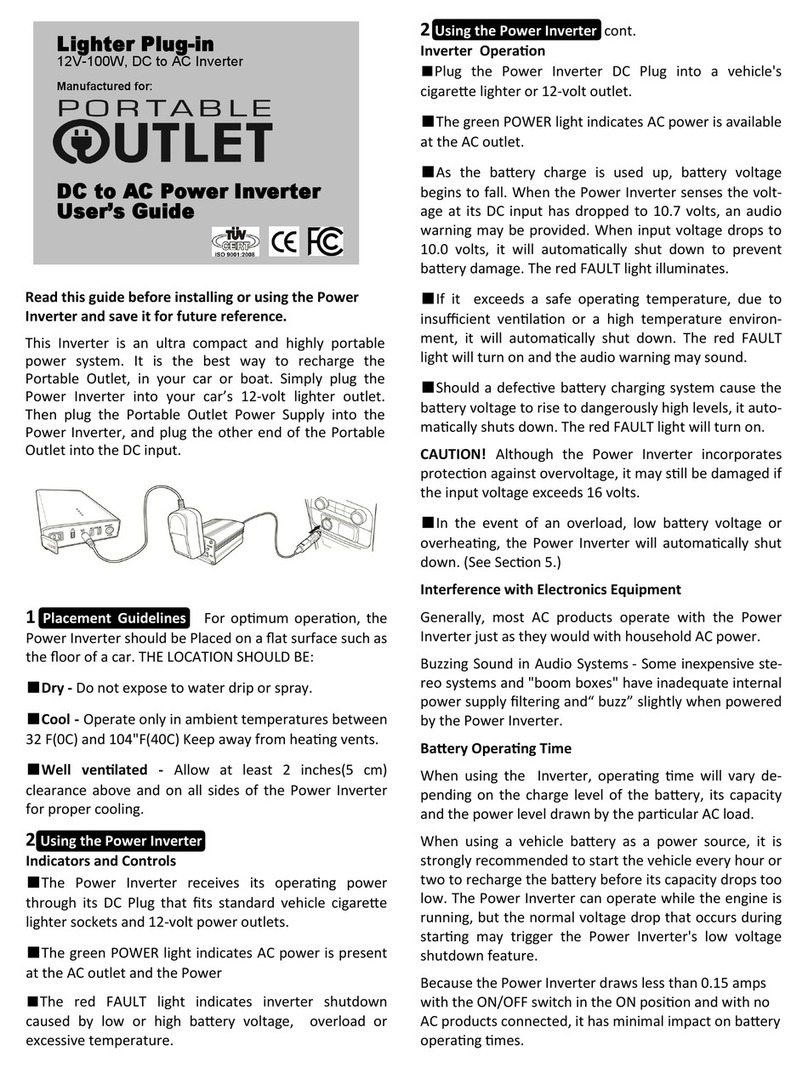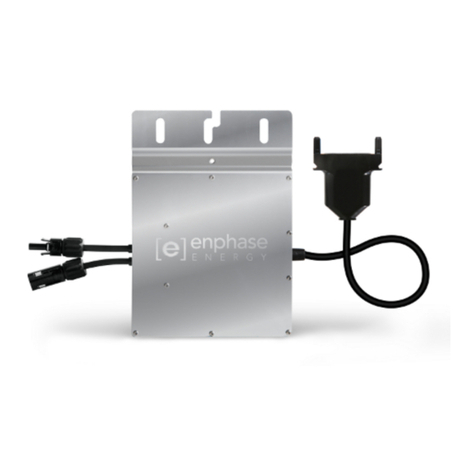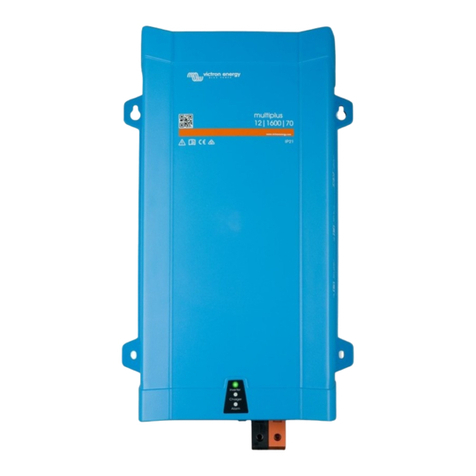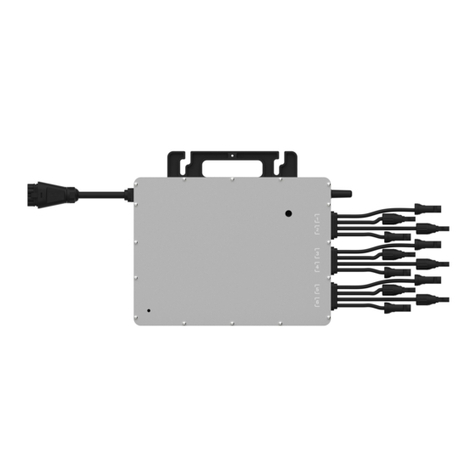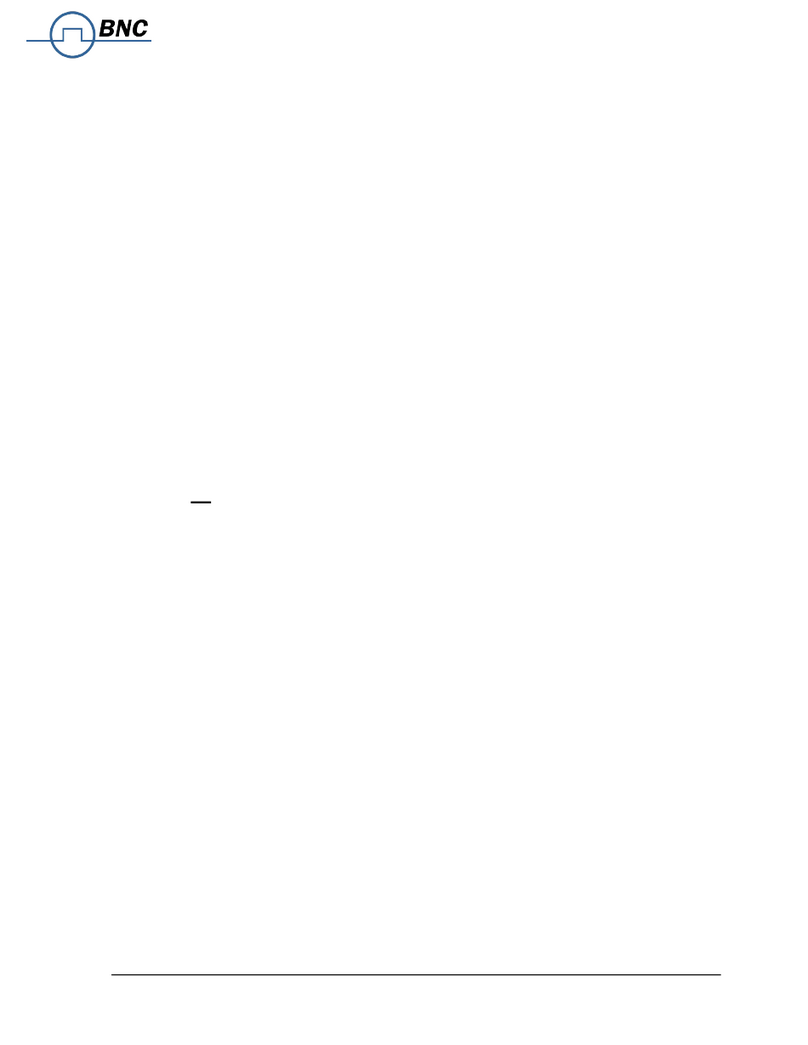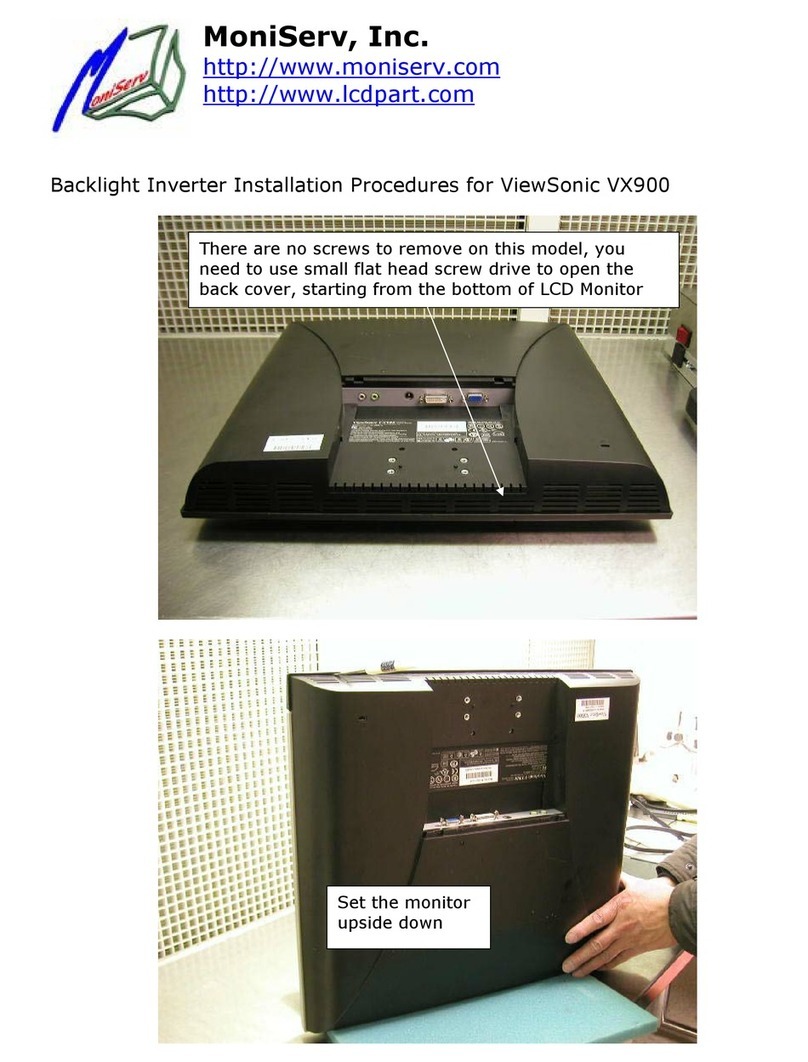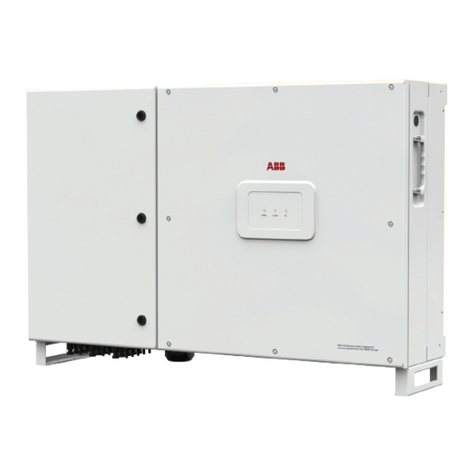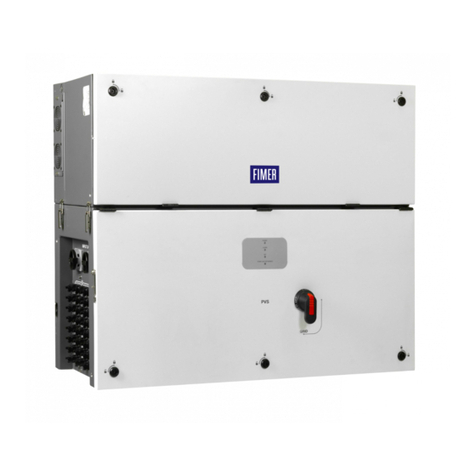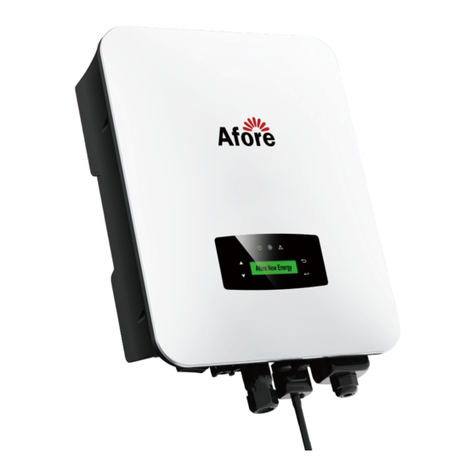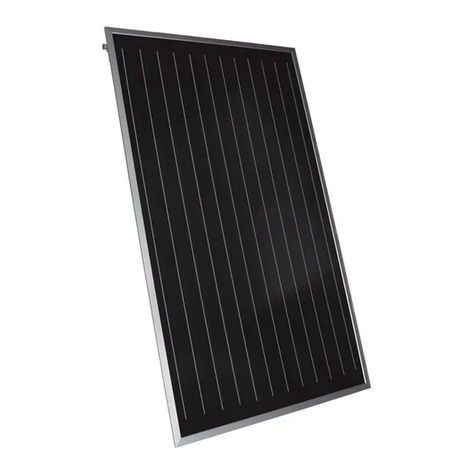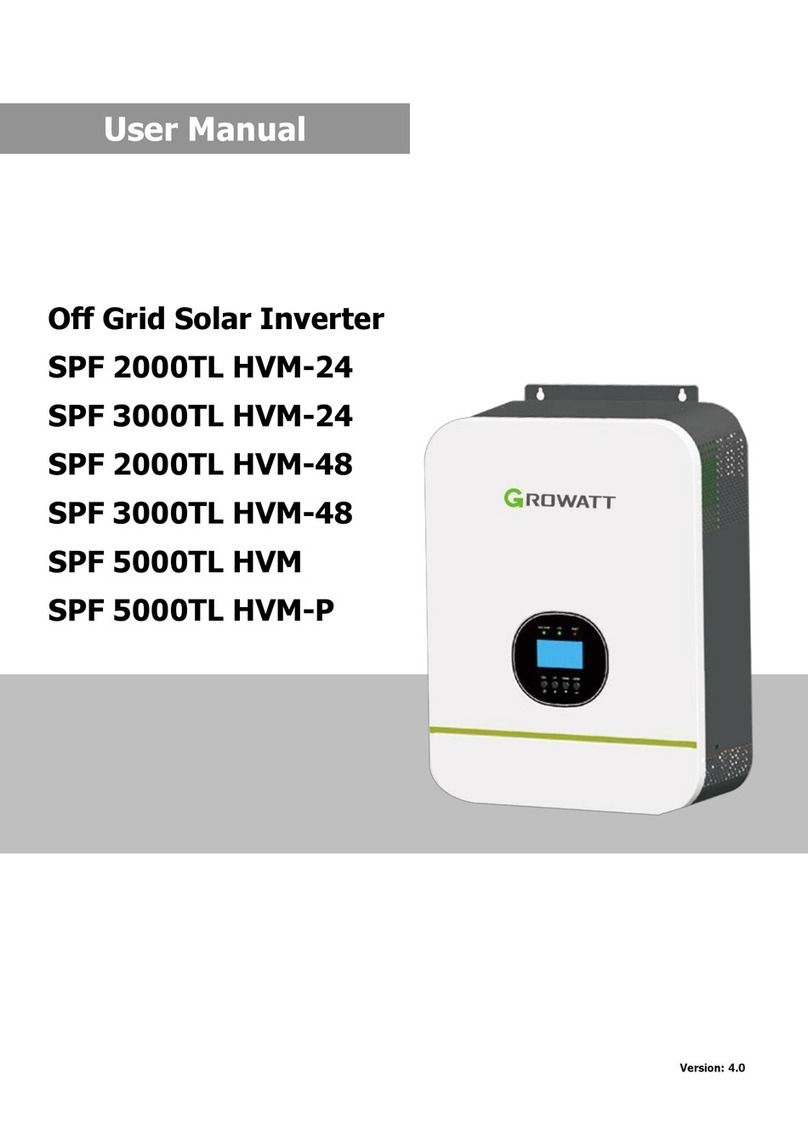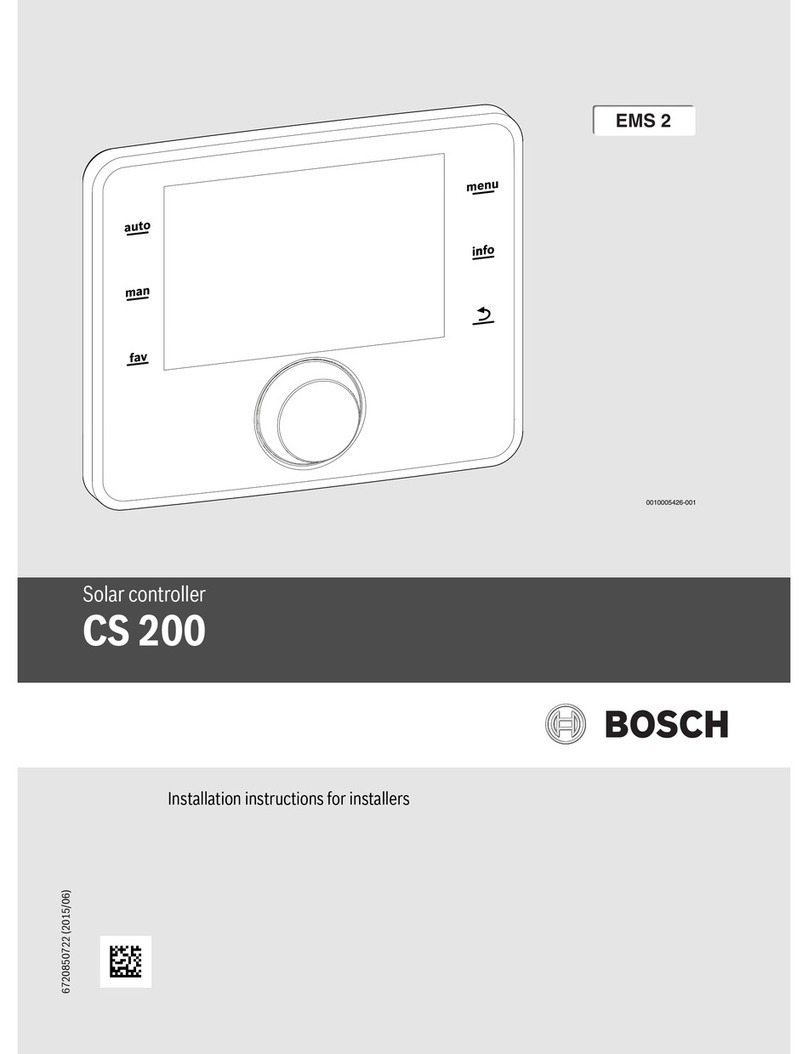
EN
19
PVS-20-TL PVS-30-TL PVS-33-TL
Embedded communication interfaces Dual port Ethernet, WLAN, RS485 advanced port (optional)
Local User Interface Synoptic, Web User Interface, “Installer for solar inverters” mobile
APP, Display (optional)
Communication protocol Modbus TCP Sunspec, Modbus RTU Sunspec (optional)
Commissioning tool Web User Interface, “Installer for solar inverters” mobile APP
Cloud services Aurora Vision®Plant Management Platform, Rest API
Advanced features Embedded export limitation control (in combination with external
meter), 24h self consuption monitoring
Environmental
Operating ambient temperature range -25...+60°C (-13...140 °F) with derating above 45 °C (113 °F)
Storage temperature -40°C...+85°C / -40°F...185°F
Relative Humidity 4…100 % with condensation
Sound pressure level, typical 75dB(A) @ 1m
Maximum operating altitude without derating 4000 m (13123 ft) 4000 m (13123 ft)
4000 m (13123 ft)
with output power
[Pout ] derating above
3000m (9842 ft) (6)
Environmental pollution degree
classification for external environments 3
Environmental class Outdoor
Climatic category according to IEC 60721-3-4 4K26
Physical
Inverter typology Grid conneccted, Double stage, Transformerless
Environmental Protection Rating IP 65
Cooling System Forced air
Dimension (H x W x D)
H = 675 mm / 26.57” (799,2mm / 31.46” with connection boxes)
W = 591,8 mm / 23,3”
D = 227,5 mm / 8,95”
Weight 50 Kg / 110lb
Mounting system Single mounting bracket (vertical and horizontal installation)
Night-time consumption (active power / reactive power) <12W/ <120VAR
Minimum inverter feed-in power 10W
Overvoltage rating as per IEC 62109-1 II (DC input) III (AC output)
Safety
Safety class I
Insulation Level Transformerless
Marking CE (5), RCM
Safety, EMC and Radio Spectrum Standards
IEC/EN 62109-1, IEC/EN 62109-2, EN 61000-6-1, EN 61000-6-2,
EN 61000-3-11, EN 61000-3-12, EN 62311, EN 301 489-1,
EN 301 489-17, EN 300 328
Grid standard
(check the availability with your sales channel)
IEC 61683, EN 50530, IEC 62116, IEC 61727, AS/NZS 4777.2, VDE-
AR-N 4105, VDE-AR-N 4110, VDE V 0124-100, DIN VDE V 0126-1-1,
VFR 2019, UTE C15-712-1, CEI 0-21, CEI 0-16, PEA, MEA, EN
50438 (including Ireland deviation), EN 50549-1/-2, CNS 15382,
DRRG (DUBAI), CLC/TS 50549-1/-2, TOR Erzeuger, G99,
Synergrid C10/11, RD 413, RD 1565, RD244, P.O. 12.3, NTS 631,
UNE 206006 IN (ITC-BT-40), PPDS-priloha, Denmark Type A/B,
IRR-DCC-MV, ABNT NBR 16149, ABNT NBR 16150, Chile LV/MV,
NRS 097-2-1, SII, ISO/IEC Guide 67, Netherlands Type A/B,
EIFS Type A
1. The AC voltage range may vary depending on specific country grid standards.
2. The Frequency range may vary depending on specific country grid standards.
3. Please refer to the document “String inverters – Product manual appendix” available at www.fimer.com for information on the quick-fit
connector brand and model used in the inverter.
4. Available only with a dedicated version called “SI”, with 33kW of power.
5. Hereby, FIMER S.p.A. declares that the radio equipments (radio module combined with the inverter), to which this user manual refers,
are in compliance with the Directive 2014/53/EU. The full text of the EU Declaration of Conformity is available at the following internet
address: www.fimer.com
6. @ 4000m (45° C ambient temperature), the output power (Pout) is reduced by 10%.
7. 30A (each MPPT): for Australia and New Zealand only.
8. In the event of a fault, limited by the external protection envisaged on the AC circuit
Features not specifically mentioned in this data sheet are not included in the product.




















